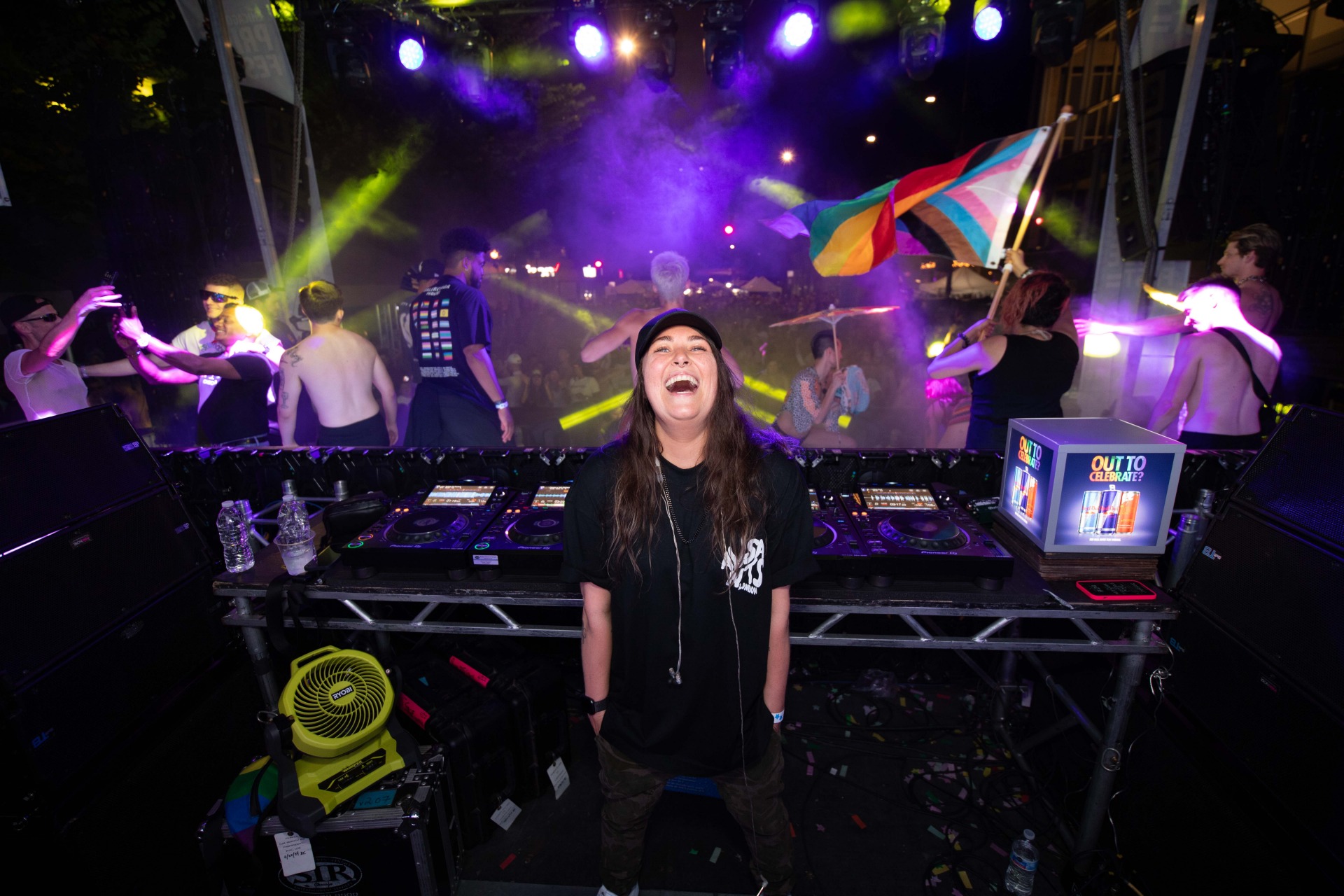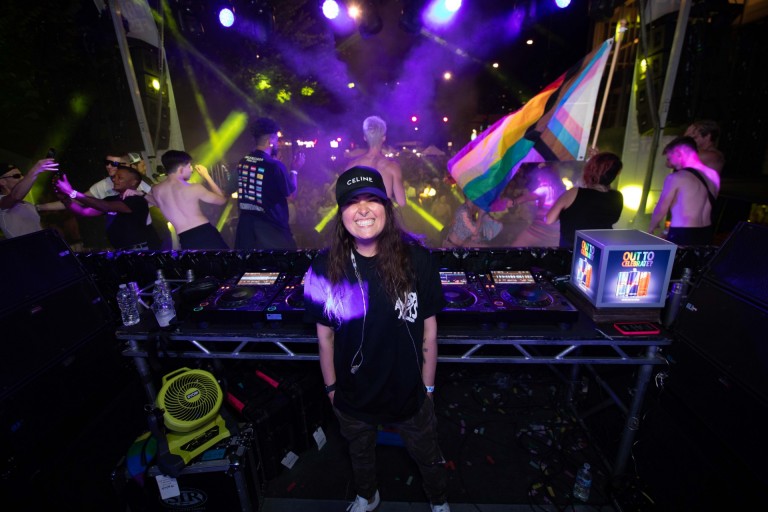Celebrating Pride last month, Avi Sic released a powerful remix pack titled ‘The Pride Pack.’ Featuring reworks of the Scissor Sisters’ ‘Let’s Have A Kiki,’ Carly Rae Jepsen’s ‘Cut To The Feeling‘ and Madonna’s ‘Girl Gone Wild,’ the release showcased Avi Sic’s ability to blend various genres and create compelling music for listeners to immerse themselves in. Fast becoming a dynamic presence within Electronic Music, whether through her studio productions, live shows, remixes, or her weekly radio show ‘Late Checkout,’ Avi Sic continues to garner attention, both from genre enthusiasts and VIPs alike.
In this behind-the-scenes interview, we sit down with Avi Sic to discuss the inspiration, process, and impact of ‘The Pride Pack,’ diving into her motivations and workflow practices.
What inspired you to create ‘The Pride Pack’ for Pride Month?
Hi! I wanted to do something special for Pride Month this year. I have always wanted to remix some of the more underground anthems in the LGBTQ+ space, so this was the perfect opportunity.
How did you choose the songs for the remix pack? Were there any specific themes or messages you wanted to convey with your selections?
I made these choices very carefully. I wanted a nice variety and eventually settled on these three tracks with different genres. They are maybe lesser-known tracks to the general public but were at one point very popular in the club scene. There’s a pop remix of Carly Rae Jepsen’s “Cut to the Feeling,” a Tech House rework of Scissor Sisters’ anthem “Let’s Have a Kiki,” and, of course, I had to do a Madonna throwback. I settled on “Girl Gone Wild” from the 2013 EDM era and made it more Bass House-heavy with a focus on the 808 drums.
When starting a new remix, do you begin with the vocal track, or do you focus on the instrumental arrangement first? What was your initial step for each track in ‘The Pride Pack’?
I started creating the instrumental first but with the vocals in mind so that they would eventually incorporate well. I kind of flipped between creating the music and trying out different patterns with the vocals. My first step was finding quality acapellas. From there, I started on general composition and arrangement and moved forward with creating the right drums, synths, and sounds.
How do you plan to incorporate these remixes into your live performances?
I’ve been playing them out a lot lately! I played them for my headline set at Chicago Pride Fest and also during the pride parade over the weekend where I had a set on the McDonald’s float. I’ve been giving them spins at a few afterparties and other sets as well. They get a great crowd response.
Can you describe the software and equipment you used during the production of ‘The Pride Pack’? Did you have any favourite plugins or tools that were particularly useful?
I use Ableton. I make a lot of synth sounds in Serum and Operator and most of my patterns in MIDI. I have a lot of custom racks for FX and mixing purposes, but some go-to plugins of mine are Maserati, H-Delay, Supermodal, and Endless Smile.

How did you ensure that each remix in ‘The Pride Pack’ maintained high energy and excitement suitable for both personal listening and dance floor environments?
I tested them out during live sets before I released them to get a feel for who responded to them, if the arrangements were well done, etc. Each gig I tried them out at had a different kind of audience, so that was helpful in terms of universal response. Listenability and danceability were the things I was watching for.
With remixes, how do you achieve the balance between retaining the original song’s essence and introducing your own style?
It’s definitely a balance. Personally, I can’t stand remixes that just add more drums and that’s pretty much it. I find that so lazy. But also, of course, I want to retain the essence of what the artists had in mind originally, so I guess it’s pretty trial and error. I keep some of the lyrics intact in spaces where I am changing the instrumental and then vice versa, where I play around more with chopped vocals and doing my own thing on the drops. It’s kind of balancing the two things that make for the best remixes, in my opinion.
Who are some of your biggest influences when it comes to remixing tracks, and did any of their styles play a role in your approach to this project?
I definitely have certain remixers/mashup artists that I’m a fan of. Like, I know when they put something out it’s probably something that will work in my live sets really well. I’m a fan of Wedamnz, Ape Rave Club, and Rick Wonder. But I wouldn’t say they played a role in my approach to this pack—since each song takes on a different genre—this was stylistically closer to how I approach originals. Everything is new from the drums to the synths to the bass rather than having some kind of template for a remix. It’s not completely predictable, which some may see as a negative, but I see that as a strength.
How does your workflow differ when working on remixes compared to original tracks?
I can complete remixes much faster. When it’s originals, I’m hyper-fixated on certain small things that no one else probably even notices, but with edits, you already have a basis for the track to refer to. And they are so fun to make. You can look at it like—I get to work with my favourite singer here or something, so it makes the process really fun, especially because the original artists are so talented.
Finally, are there any new projects you’re excited about that you can share with us?
Always! I have a new track with Kiro Prime called “Disco Train” that just came out on Robin Schulz’s label, Mentalo Music, and Spinnin’ Records. It’s been a goal of mine to release with Spinnin’, so this is a special one for me. Also, it’s my first track using my own vocals as the lead, which is very exciting. I put out a Billie Eilish remix of “Lunch” a few weeks ago, and that one is doing great also. It has been played by Timmy Trumpet, Fedde Le Grand, and R3HAB, to name a few. And, of course, a bunch of new music in the works too!
—-
As she continues to captivate audiences, putting forward an innovative approach and original musicality, Avi Sic cements herself as a powerful force on the Electronic Music scene. With our interview coming to a close, we thank Avi Sic for sharing her insights and allowing us a glimpse into her creativity world; as we look forward to what she has in store next, we encourage you to check out ‘The Pride Pack’ and be sure to follow Avi Sic across social media to not miss out on any of her upcoming releases, performances or projects.
